In recent years, with the rise of the China-Chic trend, many gold stores have also begun to favor products of traditional culture and launched the so-called ancient gold craft and inheritance series of Chinese gold jewelry.
The ancient Chinese used goldware as body decoration, dating back to the Xia Dynasty 4,000 years ago. The gold eardrops unearthed in Gansu is the best proof.
The simple circle obviously cannot reflect the skill level of the ancients, so today let’s take a look at the gold earrings and gold bracelets in the museum’s collection of cultural relics. Let’s experience the luxury aesthetics of ancient Chinese gold jewelry.
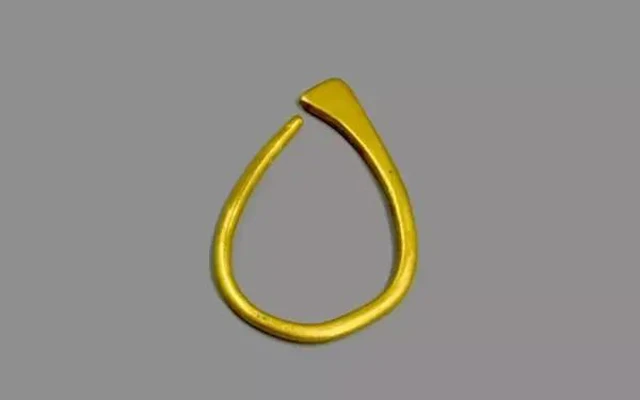
Gold earrings, 2100-1600 B.C., collection of Gansu Provincial Institute of Archaeology
Eardrop
Eardrops (Er Zhui, 耳坠) is a kind of traditional Chinese earrings, with an additional part of the drop than earrings.
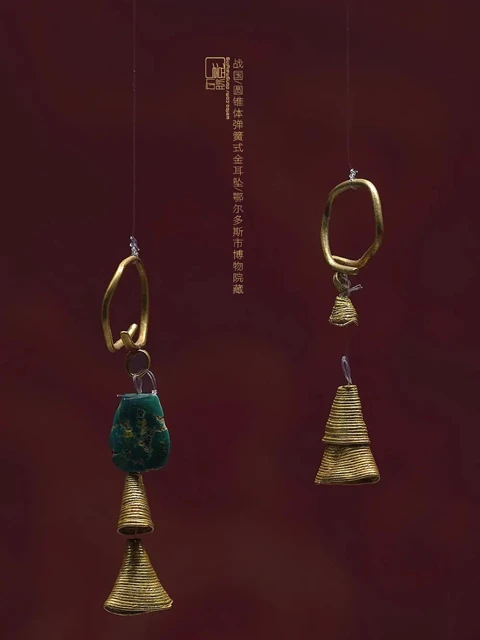
Gold earrings, Warring States period, collection of Ordos Museum
This pair of gold eardrops in the Warring States Period adopts a cone and spring design, and the color matching of gold and turquoise is even more ingenious.
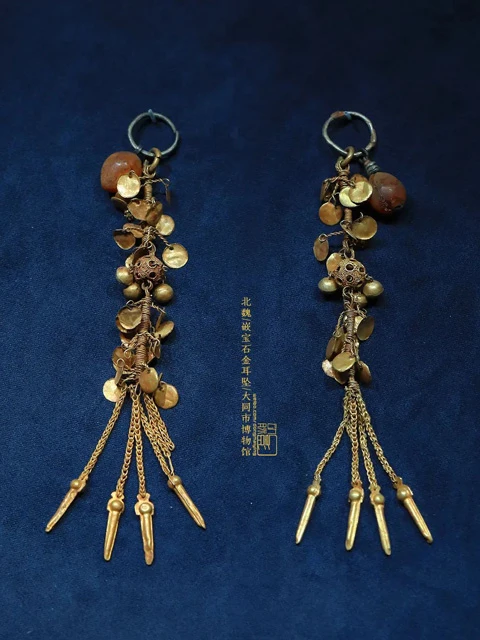
Gem-set gold earrings, Northern Wei Dynasty, collection of Datong Museum
This pair of gold eardrops from the Northern Wei Dynasty is composed of amber, silver ring, gold ring, silk column, hollow gold beads, wheat ear flower and other elements. Through weaving, welding, hammering, wire drawing, and other technologies, it creates a complicated but not messy effect.
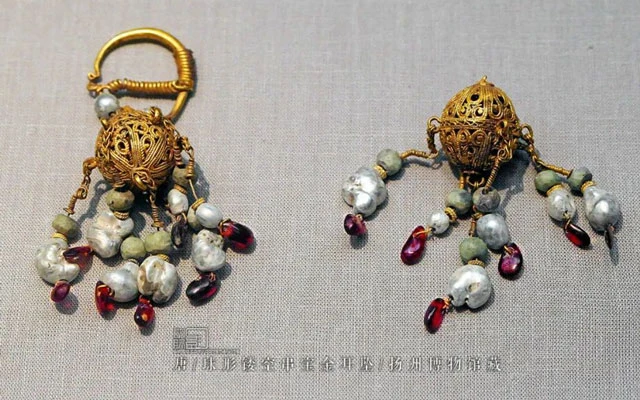
Spherical openwork gold earrings, Tang Dynasty, collection of Yangzhou Museum
Ancient people’s yearning for gold jewelry in the Sui and Tang Dynasties has developed unprecedentedly. At that time, the production of gold and silverware also developed dozens of superb crafts such as wire pinching, inlaying, gilding, and gold wrapping.
Although the custom of ears piercing and wearing earrings has existed since ancient times, it did not become popular until after entering the Song Dynasty.
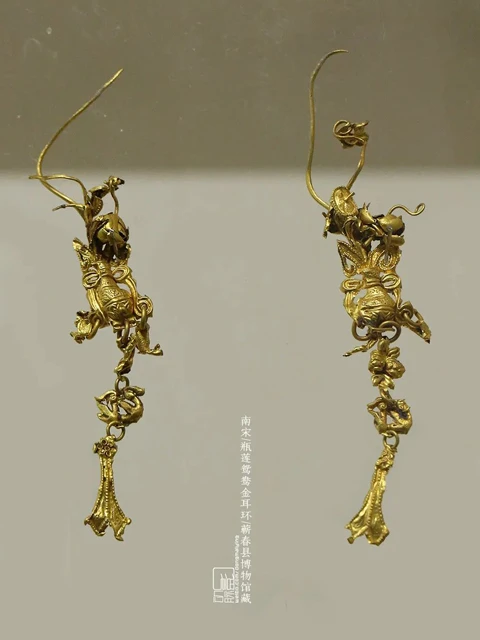
Gold earrings with mandarin ducks, Southern Song Dynasty, collection of Qichun Museum
The earrings of the Song Dynasty are richer than that of the previous dynasties. In the picture above, the earring string lotus leaves, lotus, vases, flowers, mandarin ducks and knife-shaped pendants from top to bottom, with an overall length of 8.5cm.
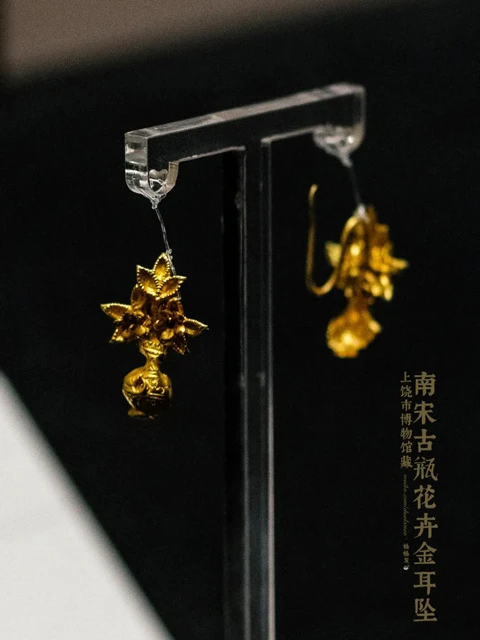
Gold earrings with flowers and vase, Southern Song Dynasty, collection of Shangrao Museum
This is a very rare shape of the ancient bottle in the gold earrings, and also a flower arrangement that seems to be a single-petal daffodil in the bottle. Such simple and beautiful gold jewelry, no one can resist.
However, in the Song Dynasty, ordinary people could only think about it, because Taizong, Zhenzong, and Renzong all banned the use of gold in clothing and accessories many times, and pearls were only allowed to women with titles because it was not easy to collect.
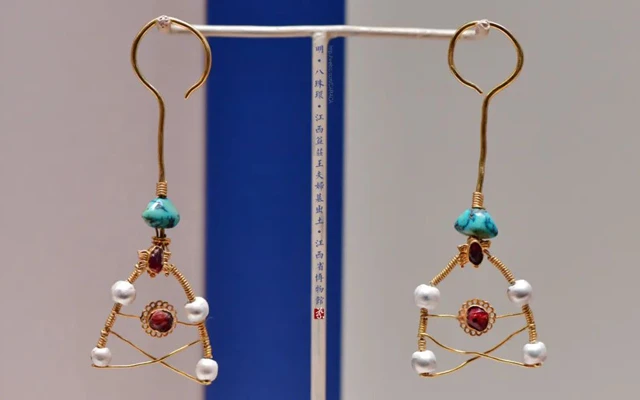
Four pearls gold earrings, Ming Dynasty, collection of Jiangxi Provincial Museum
In the Ming Dynasty, the shape of earrings was incorporated into the standard of the royal clothing system for the first time. The shape of four pearls embedded in one earring is one of the court styles. In the picture, the owner of the eight pearl rings is Wan Shi, the step concubine of Zhu Houye, the king of Yizhuang.
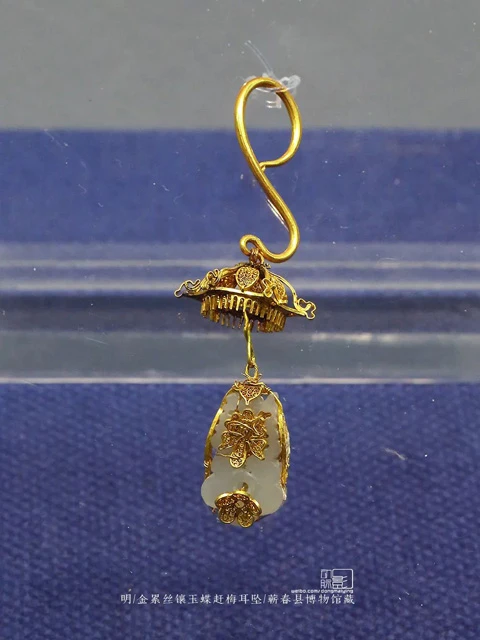
Golden silk-inlaid jade earrings, Ming Dynasty, collection of Qichun Museum
In the tomb of Mrs. Yuan, the concubine of Zhu Qijian, the king of Duchang, was unearthed a pair of golden silk-inlaid jade earrings. Above this pair of eardrops is a hollowed-out golden silk flower and leaf umbrella cover, and the umbrella cover is decorated with gold and jade decorations.
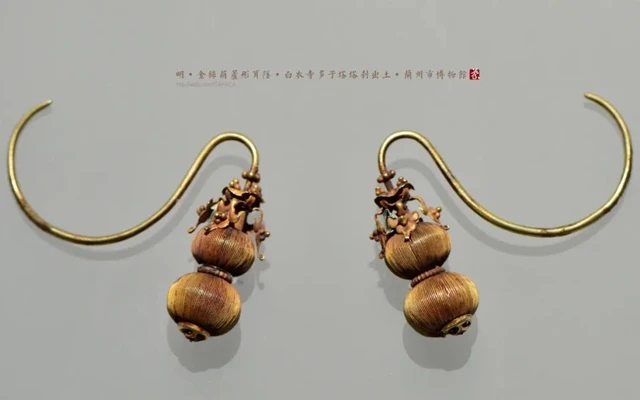
Gold wire gourd-shaped earrings, Ming Dynasty, collection of Lanzhou Museum
The gourd ring is also one of the most common styles in the Ming Dynasty. It takes the auspicious meaning of "Fu Lu (福禄, happiness, titles and emoluments)". The highest specification is the"four bead gourd ring", and the specifications of the gourd ring made of golden jade are slightly lower.
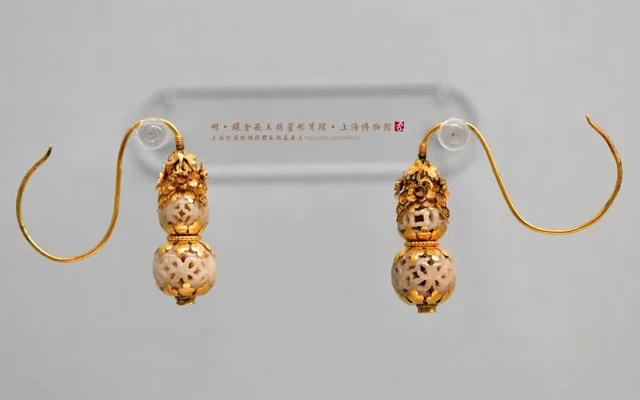
Gold and jade-inlaid gourd-shaped earrings, Ming Dynasty, collection of Shanghai Museum
Generally speaking, the pure gold gourd rings unearthed from the Ming tomb are not only much more than the gold bead gourd rings in quantity, but also more exquisite and diverse in craftsmanship.
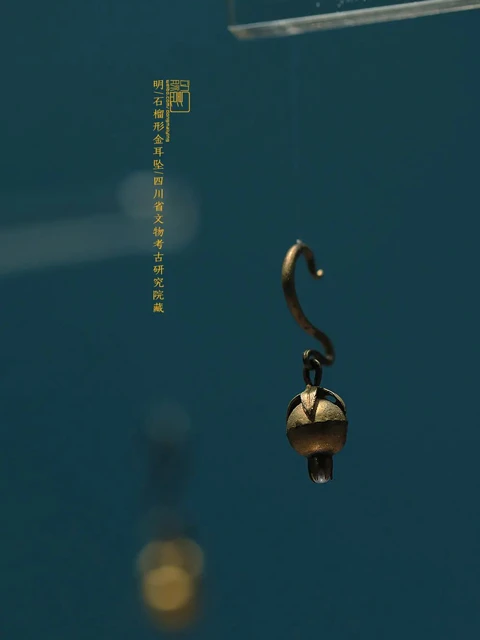
Pomegranate-shaped gold earrings, Ming Dynasty, collection of Sichuan Archaeological Research Institute
Pomegranate has the meaning of "multiple children and blessings" among the people. This pomegranate-shaped pearl-inlaid gold eardrop is a relic of Jiang Kou Chen Yin (江口沉银, a site located in Sichuan.). It witnessed the history of Zhang Xianzhong, the general of the peasant uprising at the end of the Ming Dynasty, who planned to search for property from Shaanxi, Henan and other places, but was attacked at the mouth of the Pengshan River. It was small and cute, which is still unoutdated.
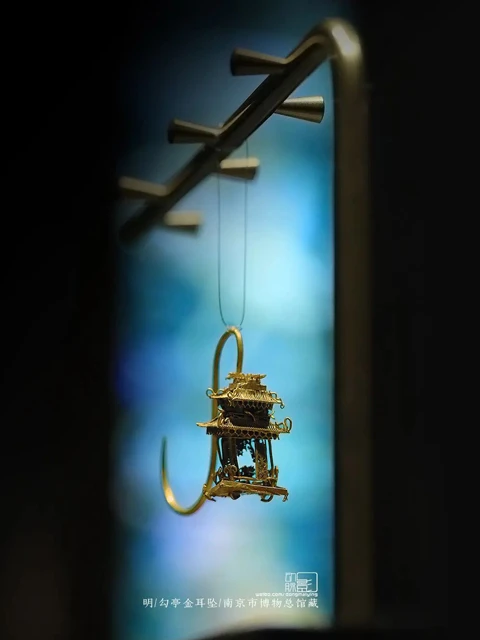
Pavilion gold earrings, Ming Dynasty, collection of Nanjing Museum
This pair of pavilion-shaped eardrops is also very designed. The 3-centimeter-high pavilion uses filigree and other processes. Amazingly, in addition to a fixed screen on one side, the other three sides of the pavilion can still be opened and closed.
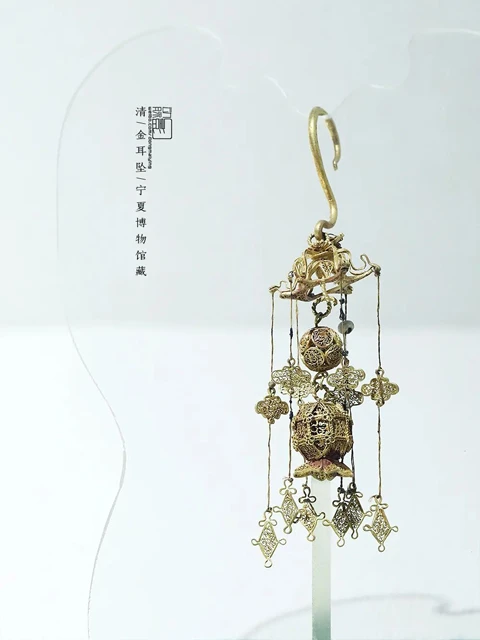
Gold Earrings, Qing Dynasty, collection of Ningxia Museum
This Qing Dynasty gold earrings, collected by the Ningxia Museum, shape the image of lanterns and hydrangeas. The shape is complex and realistic, full of joy, and is representative of the highest level of craftsmanship in the Ming and Qing Dynasties.
Bracelet
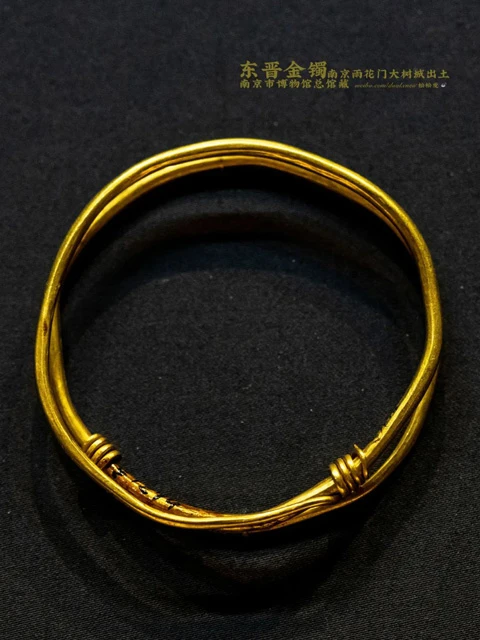
Gold bracelet, Eastern Jin Dynasty, collection of Nanjing Museum
This double-stranded gold round bracelet, which is convenient to adjust the width and narrow, and it is from the era of Wang Xizhi, is one of the most common and simplest bracelet styles in Eurasia.
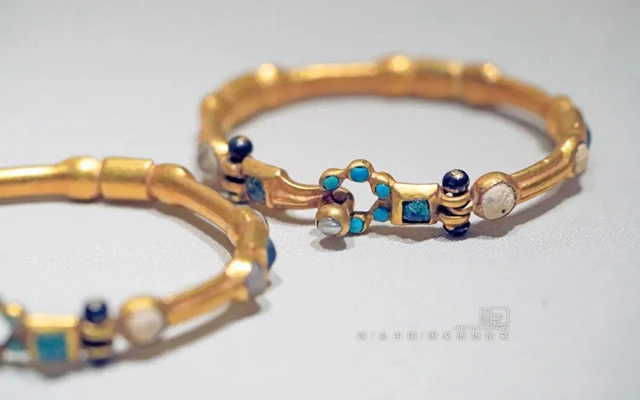
Gold bracelet, Sui Dynasty, excavated from the tomb of Li Jingxun, Xi'an, Shaanxi Province, 1957
Yang Jian, Emperor Wen of Sui, and Empress Dugu created a pair of gold bracelets set with turquoise, glass and other jewelry for their favorite great-grandaughter Li Jingxun, which were small and chic, full of love.
There are many styles of bracelets of the Sui and Tang Dynasties originating from North India or the Central Plains.
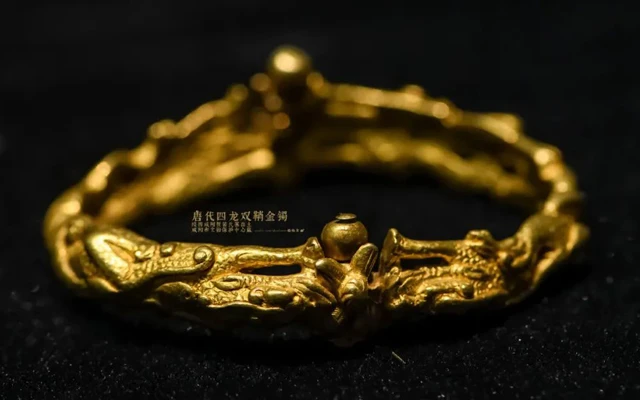
Gold bracelet with four dragons, Tang dynasty, collection of Xianyang Cultural Relics Conservation Center
This gold bracelet is wrapped in gold eronges to form a semi-ring, then connected by hinge shafts, fixed into rings.
Such ingenious, luxurious and connotative design is not what ordinary people will own. The husband of the owner of the gold bracelet is Du Guluo, the eldest son of Du Guxin (famous general of Northern Dynasty).
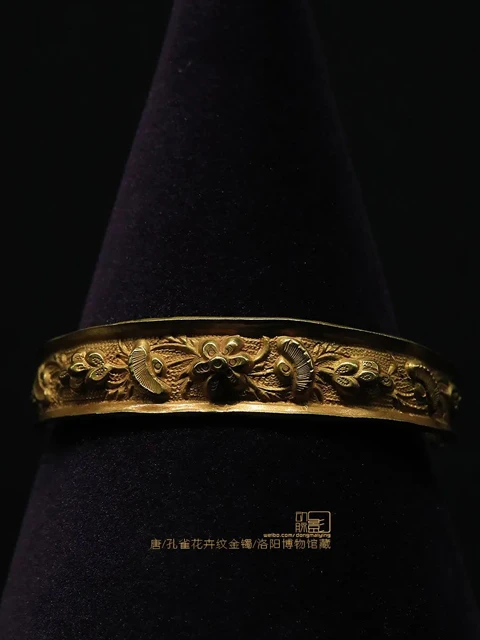
Peacock floral gold bracelet, Tang Dynasty, collection of Luoyang Museum
This peacock floral gold bracelet vividly shows the prosperity of the Tang Dynasty. At a glance, the nobleness of prosperity came to face.
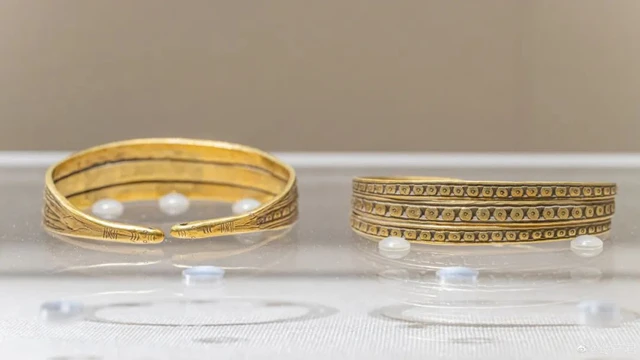
Gold bracelet with Lianzhu pattern, Tang Dynasty, collected of Yangzhou Museum
After the late Tang Dynasty, in addition to the ring shape of the bracelet, it also developed twisted wire, beads, bamboo and other shapes. After unfolding, this gold bracelet is willow-shaped, decorated with three layers of bead patterns, which is in a simple and generous style.
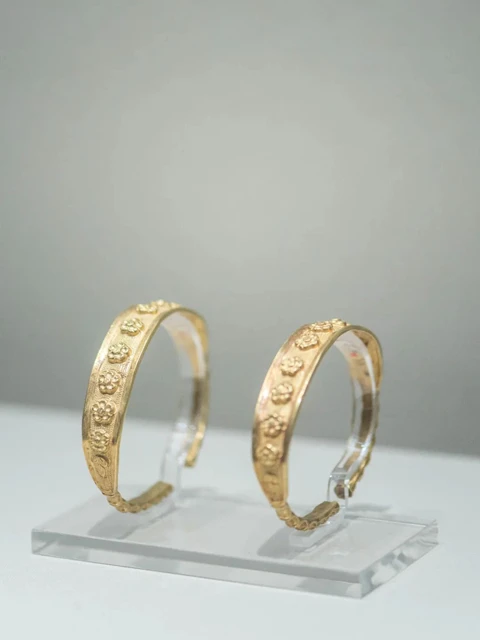
Gold bracelet, Jin Dynasty (金代), collection of Liaoning Museum
This gold bracelet, which still looks very attractive today, has simple lines, with exquisite and lovely decoration.
Gold bracelets in the Ming and Qing Dynasties usually appear in pairs, and the dragon pattern is the most common pattern, usually in the shape of two dragons playing pearls.
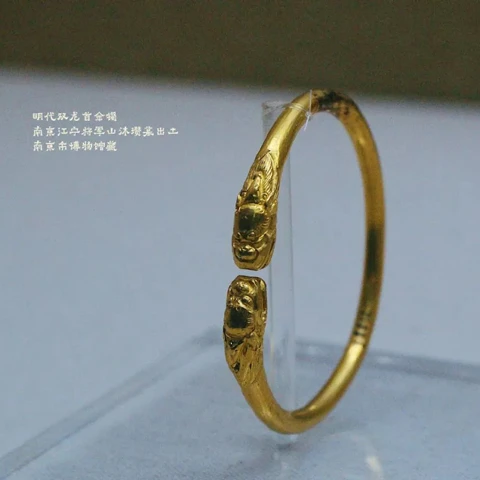
Gold bracelet with double dragon heads, Ming dynasty, collection of Nanjing Museum
In 2005, a pair of gold bracelets were unearthed in the tomb of Mu Zan and his wife Liu in Jiangning, Nanjing. The two ports of the gold bracelets are carved with a dragon head.
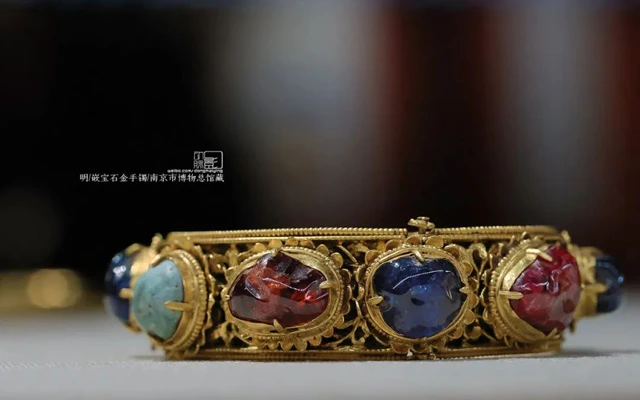
Gold bracelet with inlaid stones, Ming Dynasty, collection of Nanjing Museum
A pair of gold bracelets have also been unearthed in the tomb of Mrs. Mei, with several gemstones of various colors. In contrast, although the gold bracelet of the Taipei Palace Museum is also set with gems, it looks low-key and graceful because of its simple color matching.
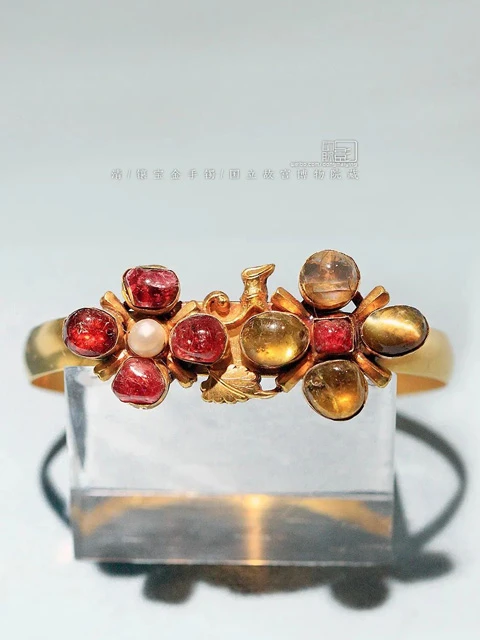
Gold bracelet with inlaid stones, Qing Dynasty, collection of National Palace Museum, Taipei
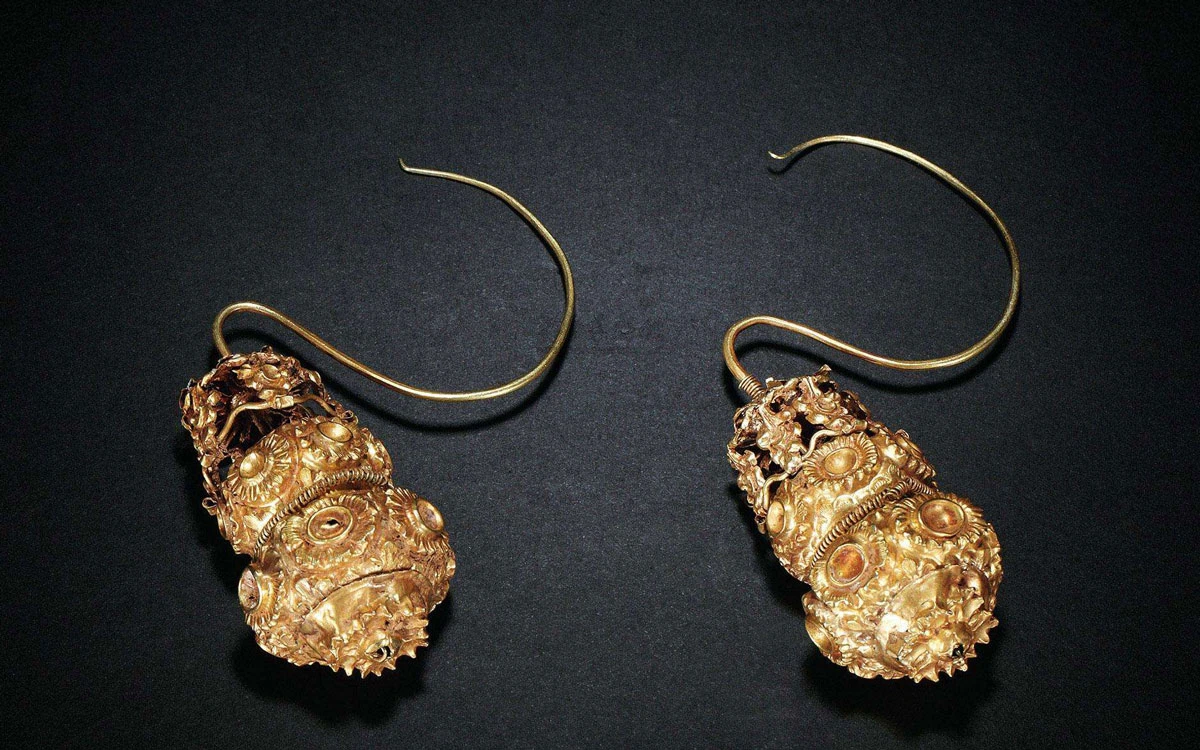
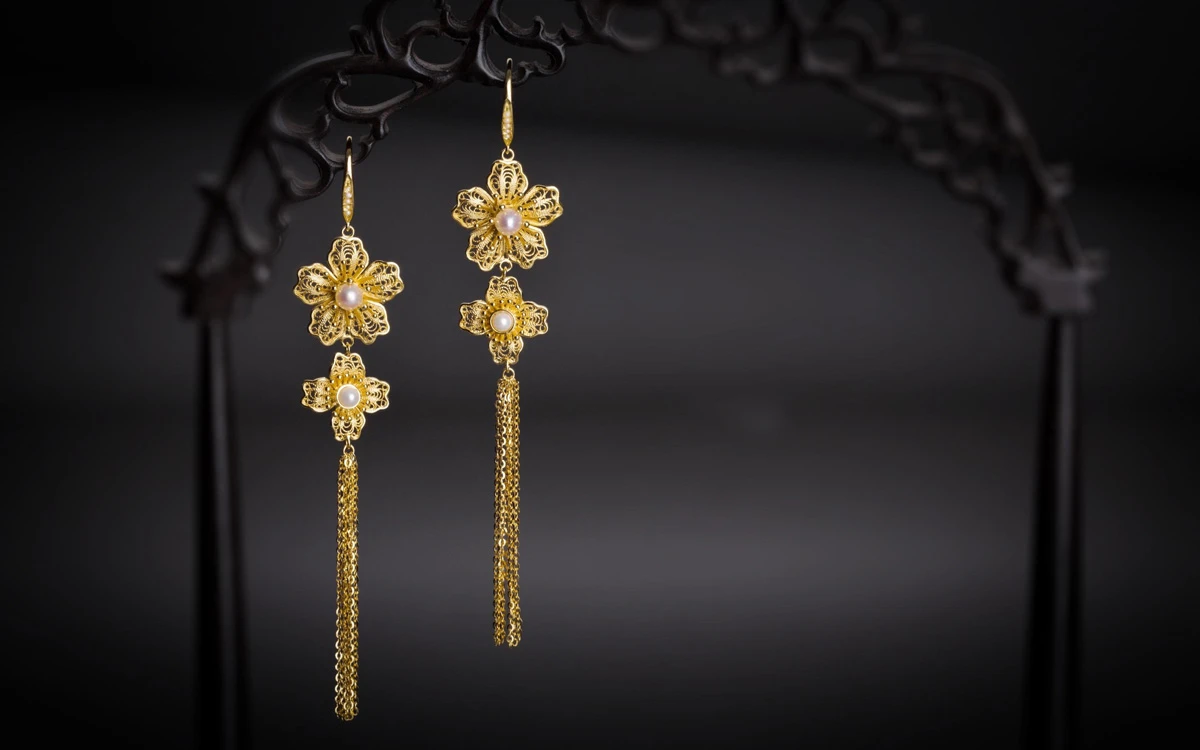
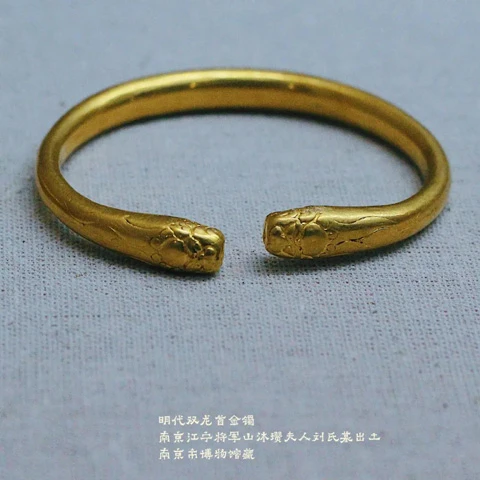
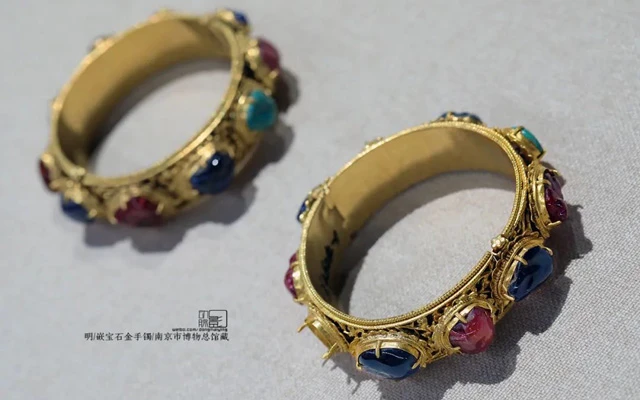


Thank you! Been looking for some period-accurate style accessories!
It's interesting how "handmade" these earings look, especialy in the entwining of the metal threads in between beads. We are so used to machine made cold perfection nowadays.
This, for real!
waw😍😍